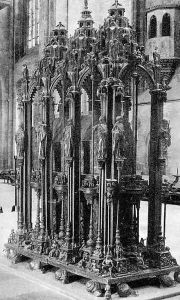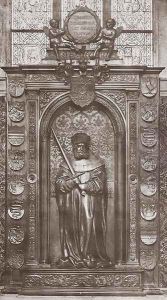Peter Vischer the Younger Paintings
Peter Vischer the Younger was born in 1487 in Nuremberg, Germany, into a family deeply entrenched in the art of bronze casting. His father, Peter Vischer the Elder, was a renowned sculptor and founder who led the Vischer Family of Nuremberg, a prominent workshop that significantly contributed to the Northern Renaissance's sculptural landscape. Peter the Younger was trained in his father's workshop, where he honed his skills in metalworking and sculpture, eventually playing a crucial role in the workshop's operations alongside his brothers.
Despite living in the towering shadow of his father's accomplishments, Peter the Younger managed to carve out his own niche within the world of art. He is especially noted for continuing the legacy of the Vischer workshop after his father's death in 1529, ensuring that the high standards of craftsmanship and creativity were upheld. Under his leadership, the workshop maintained its reputation for exquisite bronze works, including tombs, epitaphs, and statues, many of which adorned churches and public spaces across Germany.
Peter Vischer the Younger's life was emblematic of the transitional period in art between the late Gothic and the early Renaissance in Northern Europe. While much of his work was in collaboration with his family, making it difficult to distinguish his individual contributions, his efforts were integral to the projects attributed to the Vischer workshop during his time. The workshop's most famous work, the tomb of Saint Sebald in St. Sebaldus Church, Nuremberg, which was primarily completed under his father's direction, also saw contributions from Peter the Younger and his siblings.
His death in 1528 marked the end of an era for the Vischer family, although his brothers continued the workshop's operations for some time thereafter. Peter Vischer the Younger's legacy is somewhat overshadowed by his father's monumental reputation, but his contributions to the art of bronze casting and sculpture during the Northern Renaissance remain undeniable. Through his work, he helped perpetuate the Vischer family's artistic dynasty and its influence on German Renaissance art.

